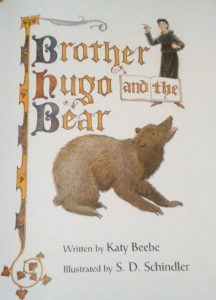
I found inspiration for the figure of Brother Hugo himself in an Oxford manuscript. At the end of an eleventh-century copy of St. Jerome’s Commentary of Isaiah, now kept in the Bodleian Library, I came across the endearing self-portrait of a Benedictine monk who had labeled his picture Hugo pictor: “the painter Hugo.”
Beebe built her story upon a comment by Peter the Venerable, abbot of Cluny, a Benedictine monastery. In a letter to another monastery asking for the loan of a manuscript, he wrote: And send to us, if it pleases you, the great volume of letters by the holy father Augustine, which contains his letters to Saint Jerome, and Saint Jerome’s to him. For it happens that the greater part of our volume was eaten by a bear.
I wasn’t looking for another book on the preservation of ancient manuscripts. This one jumped out at me while I was innocently flipping through the picture book stacks at our library. It’s getting to be a habit.
Brother Hugo and the Bear is beautifully illustrated, informative, and funny. Brother Hugo’s library book is due on the first day of Lent, but he can’t return it because a bear ate it. The Abbot tells Hugo that, in order to make up for what he has lost, he must go to a neighboring monastery, borrow their copy of the same book, and copy it word for word within the season of Lent!
Brother Hugo sets out to obey, but feels that he’s being followed all the way to the other monastery. It seems the bear liked the first book so much that he wants more.
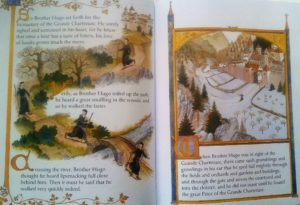
Hugo manages to sneak the borrowed manuscript past the sleeping bear to get it home safely.
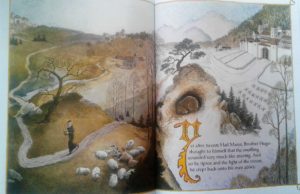
But he knows he’ll never get the book copied in time without help. One of the Brothers tells Hugo, “Friends meet every misfortune joyfully and help to bear each other’s burdens.” Here’s the author’s opportunity to teach readers what went into the making of books in the eleventh century.
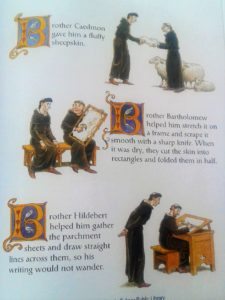
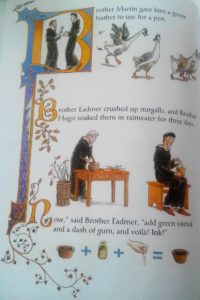
Once the copy is complete, Brother Hugo must somehow get past the bear again in order to return the borrowed book. I won’t tell you whether he manages it or not?
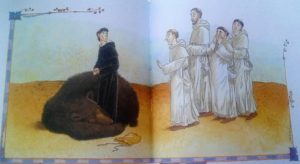
Oh my, this one is anew favorite of mine as well! I loved the illustrations and the thoughtfulness of the text. But what my children and I loved most was the humor.